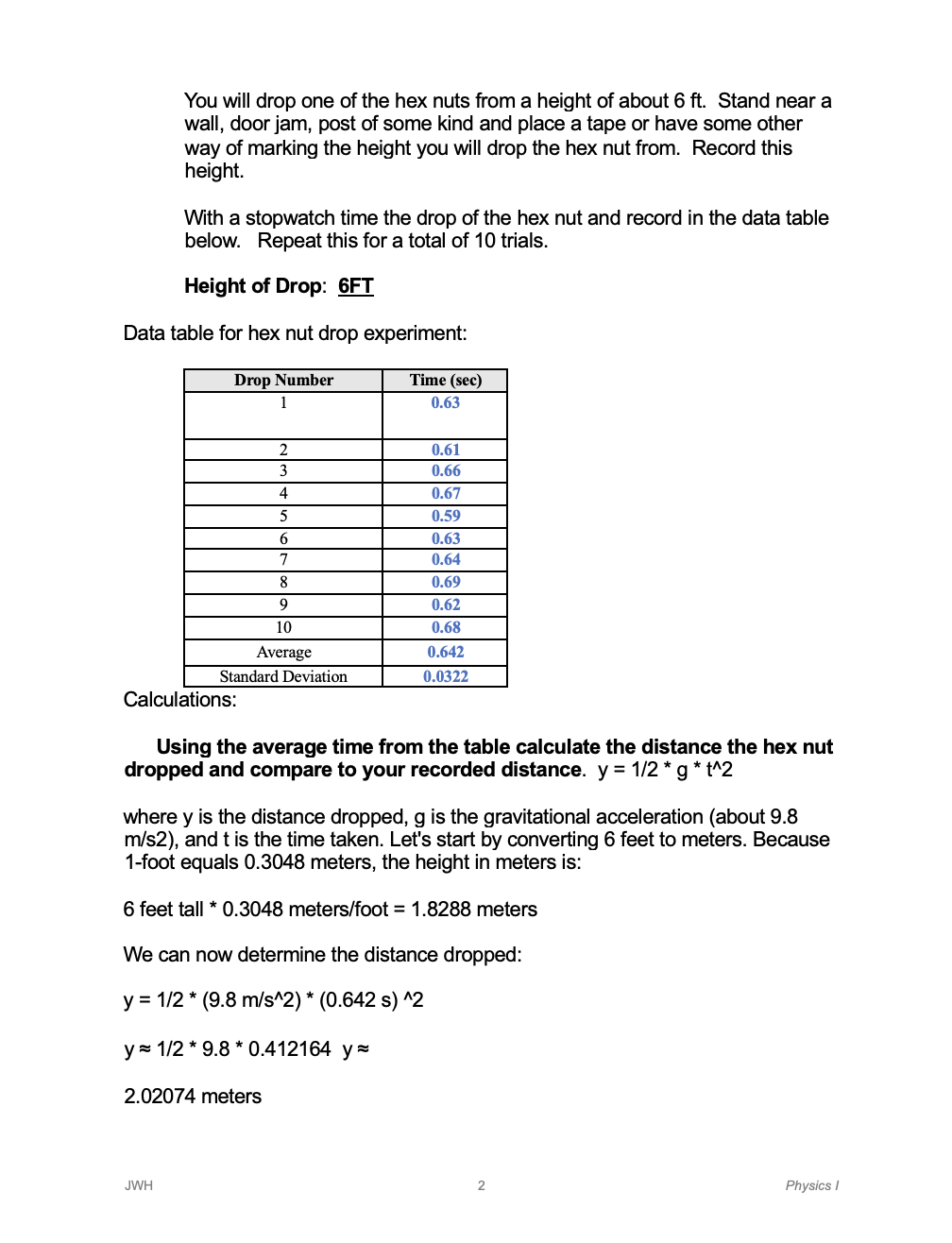Use the average time to drop and calculate the distance dropped using the equation given. Then compare this distance to the measured distance. Use Y = 1/2 g t^2, Thus Y= 4.9 t^2
Use the average time to drop and calculate the distance dropped using the equation given. Then compare this distance to the measured distance. Use Y = 1/2 g t^2, Thus Y= 4.9 t^2
University Physics Volume 1
18th Edition
ISBN:9781938168277
Author:William Moebs, Samuel J. Ling, Jeff Sanny
Publisher:William Moebs, Samuel J. Ling, Jeff Sanny
Chapter5: Newton's Law Of Motion
Section: Chapter Questions
Problem 89AP: In building a house, carpenters use nails from a large box. The box is suspended from a spring twice...
Related questions
Question
100%
This cannot be hand-written, please type out the solution
Use the average time to drop and calculate the distance dropped using the equation given. Then compare this distance to the measured distance. Use Y = 1/2 g t^2, Thus Y= 4.9 t^2
See my attempt attached with the data - teacher indicated my work needed correction, please help
Thank you!

Transcribed Image Text:You will drop one of the hex nuts from a height of about 6 ft. Stand near a
wall, door jam, post of some kind and place a tape or have some other
way of marking the height you will drop the hex nut from. Record this
height.
With a stopwatch time the drop of the hex nut and record in the data table
below. Repeat this for a total of 10 trials.
Height of Drop: 6FT
Data table for hex nut drop experiment:
Drop Number
1
Calculations:
2
3
4
5
JWH
6
7
8
9
10
Average
Standard Deviation
Time (sec)
0.63
0.61
0.66
0.67
0.59
0.63
0.64
0.69
0.62
0.68
0.642
0.0322
Using the average time from the table calculate the distance the hex nut
dropped and compare to your recorded distance. y = 1/2* g * t^2
where y is the distance dropped, g is the gravitational acceleration (about 9.8
m/s2), and t is the time taken. Let's start by converting 6 feet to meters. Because
1-foot equals 0.3048 meters, the height in meters is:
6 feet tall * 0.3048 meters/foot = 1.8288 meters
We can now determine the distance dropped:
y = 1/2* (9.8 m/s^2) * (0.642 s) ^2
y≈ 1/2 * 9.8* 0.412164 y≈
2.02074 meters
2
Physics I
Expert Solution
This question has been solved!
Explore an expertly crafted, step-by-step solution for a thorough understanding of key concepts.
Step by step
Solved in 3 steps

Knowledge Booster
Learn more about
Need a deep-dive on the concept behind this application? Look no further. Learn more about this topic, physics and related others by exploring similar questions and additional content below.Recommended textbooks for you

University Physics Volume 1
Physics
ISBN:
9781938168277
Author:
William Moebs, Samuel J. Ling, Jeff Sanny
Publisher:
OpenStax - Rice University

Glencoe Physics: Principles and Problems, Student…
Physics
ISBN:
9780078807213
Author:
Paul W. Zitzewitz
Publisher:
Glencoe/McGraw-Hill

University Physics Volume 1
Physics
ISBN:
9781938168277
Author:
William Moebs, Samuel J. Ling, Jeff Sanny
Publisher:
OpenStax - Rice University

Glencoe Physics: Principles and Problems, Student…
Physics
ISBN:
9780078807213
Author:
Paul W. Zitzewitz
Publisher:
Glencoe/McGraw-Hill